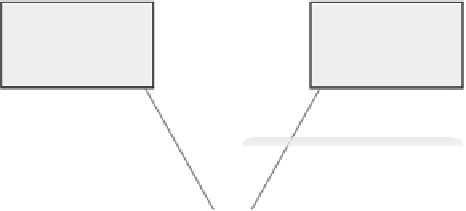Database Reference
In-Depth Information
design process, and as such, we should be aware of the trend towards table scans
and MS/HJ.
Ideal Indexes for Joins
Ideal indexes do not differ greatly according to the type of join. The ideal
index on an outer table in a NLJ will be identical to that for either table in
an MS/HJ—preferably a fat index that provides a very thin index slice. The only
difference occurs with the inner table of an NLJ; here the join column will be
part of the index, but again preferably a fat index that provides a very thin index
slice, and one that doesn't give rise to an excessive number of TRs.
Remember also that with MS, a sort may not be required on the outer table
if the access path provides the rows in join sequence; the join column should
therefore be included in the index, after any equal predicates. The CPU and
elapsed time savings involved in not having to create, sort, and access a work
file could be considerable.
We have seen that with HJ, the smaller row set is first stored in a temporary
table, hashed by the join column(s). The other table (or index slice) is then
scanned and for each row that satisfies the local predicates, the temporary table
is checked for matching rows, using the hash value.
JOINING MORE THAN TWO TABLES
When there are more than two tables in a join, it is not uncommon that some
connections are not supported by common columns (such as primary key and
foreign key). In Figure 8.16, tables INVOICE and ITEM can only be joined by
a Cartesian join, which would mean creating a temporary table containing all
combinations of
local rows
in the two tables, 20
,
000
×
1000
=
20
,
000
,
000 with
FF = 0.1%
FF = 1%
INVOICE
ITEM
20,000,000 rows
NLR = 20,000
100,000 rows
NLR = 1000
INO = INO
ITEMNO = ITEMNO
INVOICE_ITEM
50,000,000 rows
NLR = 50,000,000
Figure 8.16
Joining more
than two tables.










Search WWH ::

Custom Search